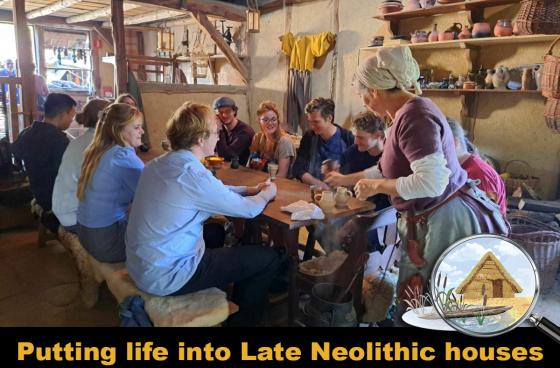
From the 21-23 August ARCHON organised a summer school for experimental archaeology. The summer school was organised in collaboration with the Putting Life into Late Neolithic Houses Project.
The summer school was held in three different locations, aimed to highlight three major aspects of experimental archaeological research. On the first day a symposium was held to highlight different case-studies on scientific archaeological experiments. The second day consisted of hands-on prehistoric craft/technology workshops in Masamuda. During the last day we visited the Eindhoven Museum where students were introduced to the concept of living experiments, and the value of archaeological open-air museums in public education.
The building workshop on the second day was connected to the Putting Life into Late Neolithic Houses project. During this day we began to build a new reconstruction at Masamuda. The project was initiated because professor Annelou van Gijn received a contribution for a new structure in the park for her retirement last year. The structure would be a reconstruction of a temporary shelter which was found in Den Haag Wateringse Binnentuinen. During this day students were introduced to various stages of house construction, including the digging of postholes, chopping down trees and the making of posts. The experiments were scientifically documented, and the tools used in these experiments will be included in the reference collection of the Laboratory for Material Culture Studies in Leiden.
The other two workshops on the second day were concerned either with cooking or basketry and fiber processing techniques. These workshops were not necessarily aimed at scientific documentation but more at introducing students to a wide variability of prehistoric cooking, basketry, and fiber processing techniques.
Overall, the summer school was a success. At present experimental archaeology is not being taught as a course (or even as part of a course) at Dutch universities. As such the summer school aimed to partially fill this gap in the Dutch education system. At the end of the summer school students had to write a setup/protocol for a scientific experiment. This provided them the opportunity to reflect on the type of questions, data, and variables which need to be considered during experiments. As such, the summer school provided a good starting point for students who consider applying this method in their own research.
EXARC is a partner in the Putting Life into Late Neolithic Houses project.
